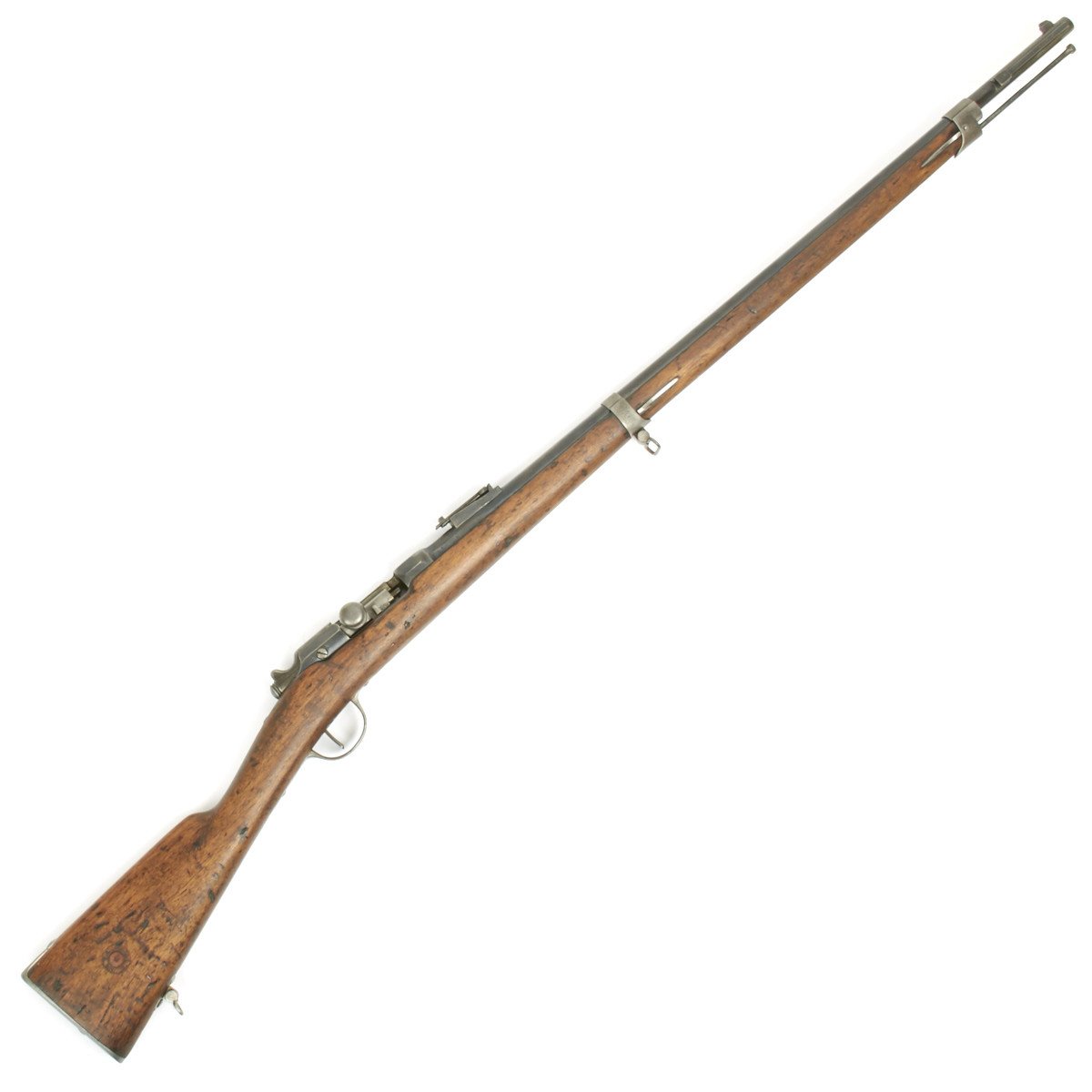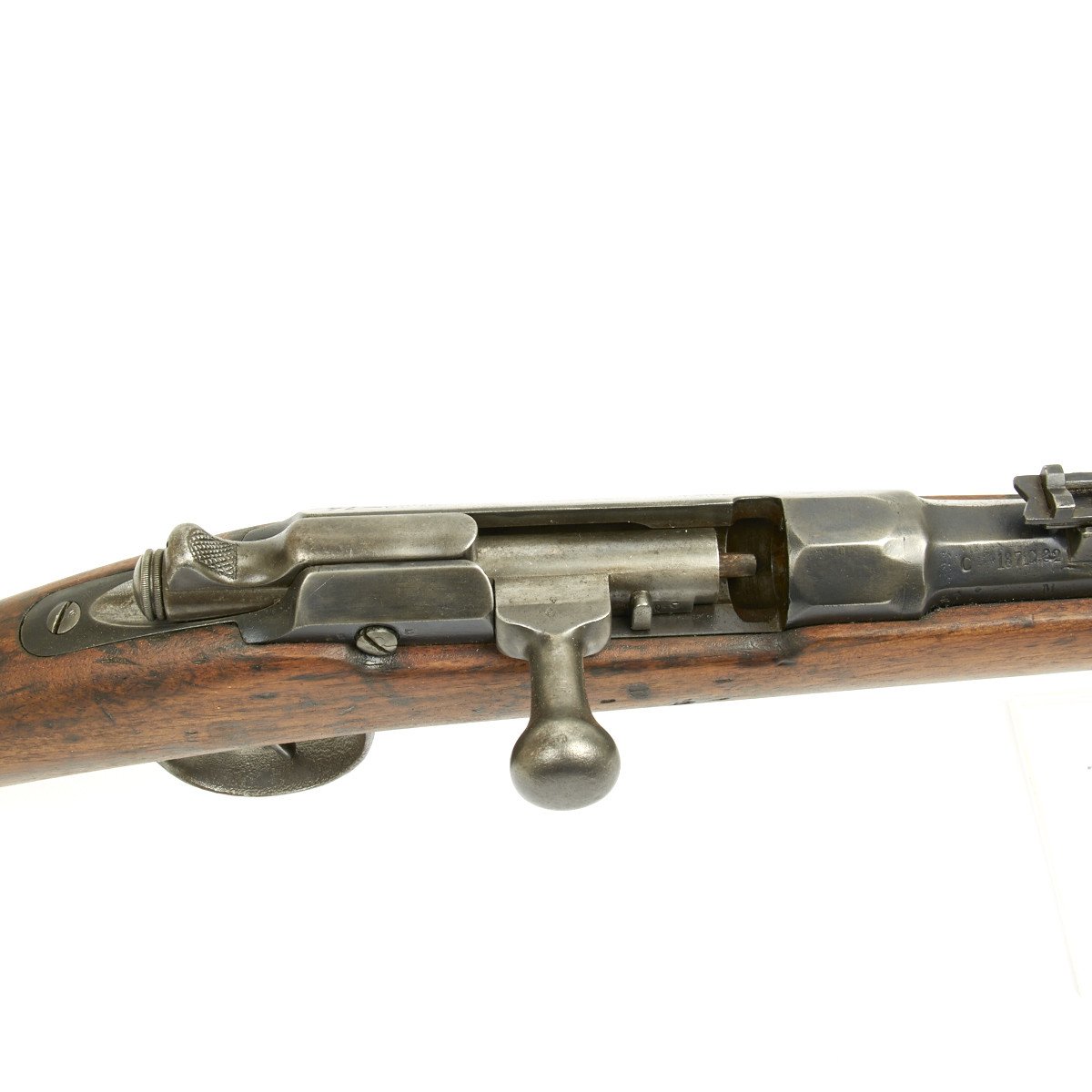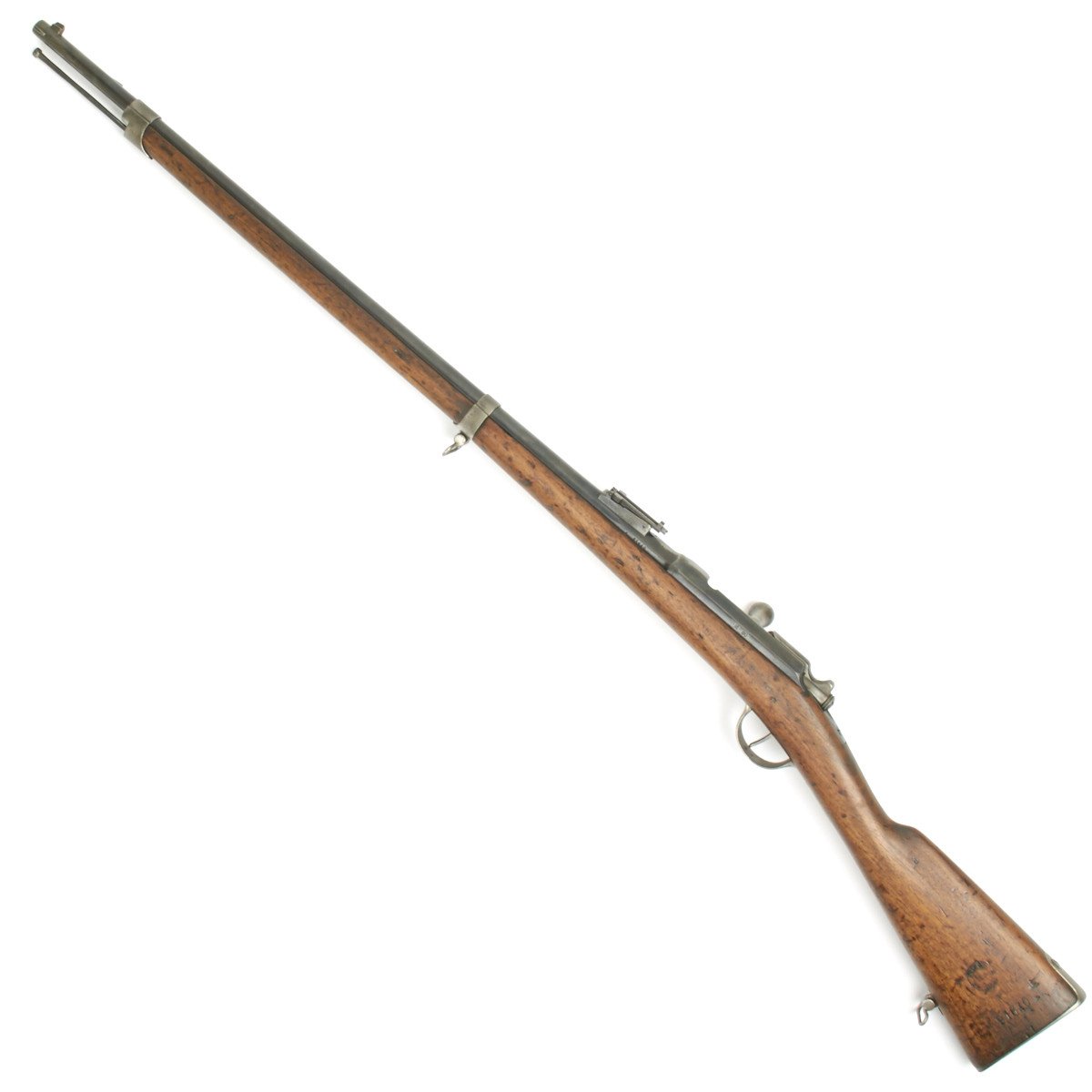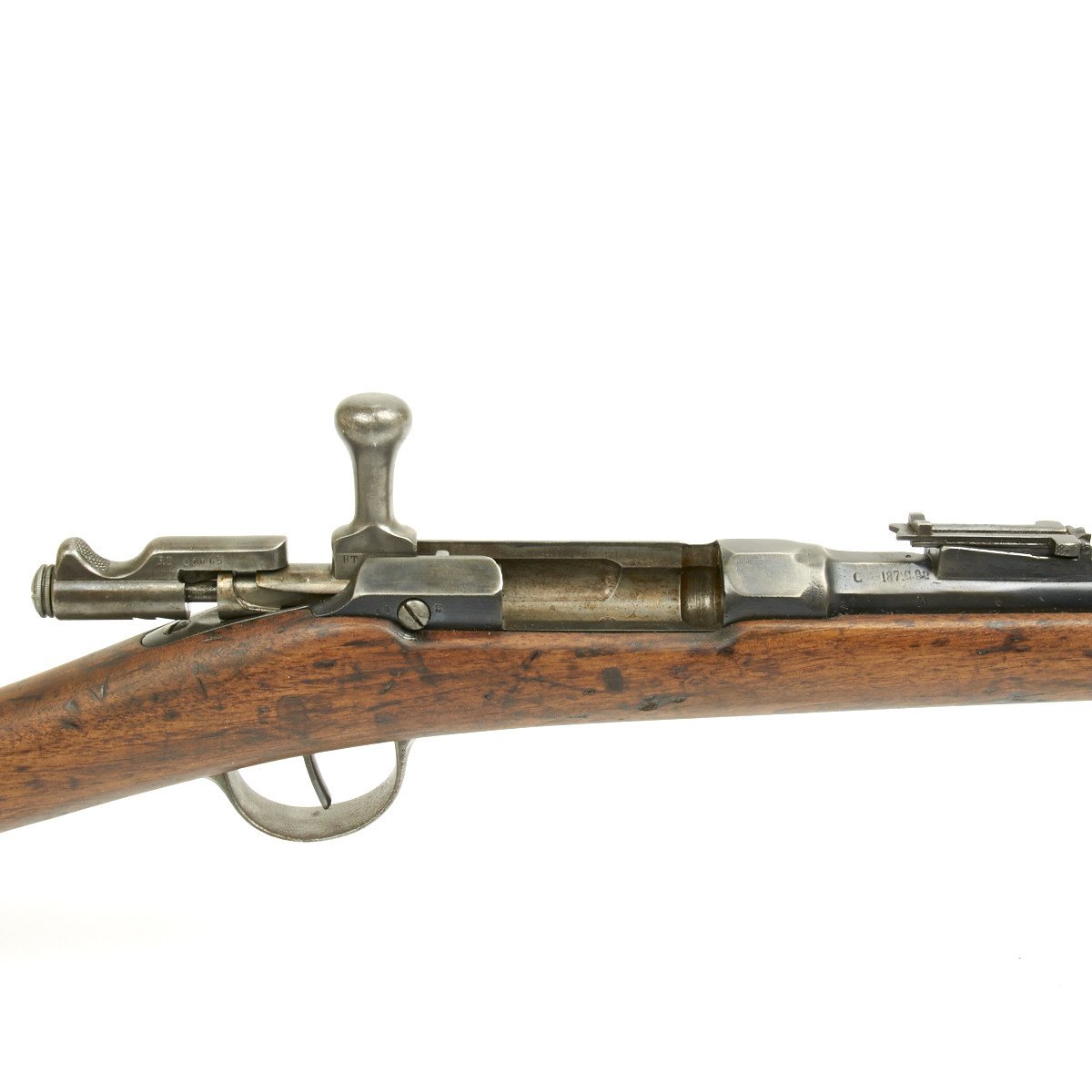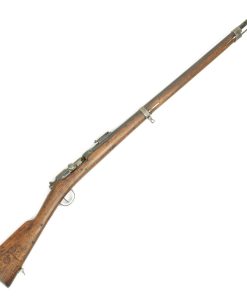Original French Model 1866 Chassepot Needle Fire Rifle Converted to Gras in 1874 Original Items
$ 495,00 $ 148,50
Original Item: Only One Available. Despite the fact that the French needle fire Chassepot rifle was far superior to the needle fire Prussian Dreyse rifle, the French took a swift and decisive beating in the war of 1870-71. In fairness to the French, the defeat was due to Napoleon III’s foolhardiness in allowing himself to get captured at the Battle of Sedan and the show was then over.
No sooner had the defeat occurred the French started fighting among themselves specifically with the forming of the “Paris Commune” in 1871. It was a disaster for France with Frenchman fighting Frenchman and is the basis tale of the theme for the Broadway musical “Les Miserables”. The fighting was basically all done in 1871 culminating in the “Bloody Week” when as many as 17,000 Communites were slaughtered. The rebellion spread to many cities in France and everywhere was ruthlessly put down over course of the following 18 months.
This Chassepot rifle is dated 1873 offered in great display condition. This is an interesting French military rifle having started life as a Needle Fire Model of 1866, then converted to center fire in 1874 as a GRAS rifle and that was finally updated in 1880.
Every time a conversion was made the gun was remarked with previous designations cancelled. The rifle is in a nice condition with the relevant markings visible despite efforts to cancel them. The bolt head is unfortunately missing but these can be found. Ironically this M-1866/74/80 was superseded in 1886 with the introduction of the 8mm Lebel rifle, however ,the Gras was still in use for reserve troops up through World War One.
The left side of the received marked St. Etienne. Mle 1866 and this comes complete with a St. Etienne marked brass-hilted saber bayonet and all steel scabbard.
The Chassepot rifle of 1866 was a single shot bolt-action rifle and was among the best of its kind in 1866. It was quickly surpassed, principally by the British Martini-Henry, and was obsoleted in 1874 with the introduction of the metallic cartridge Gras Rifle that was in turn superseded in 1886 with the Lebel Rifle.
Fast Shipping with Professional Packaging
Thanks to our longstanding association with UPS FedEx DHL, and other major international carriers, we are able to provide a range of shipping options. Our warehouse staff is expertly trained and will wrap your products according to our exact and precise specifications. Prior to shipping, your goods will be thoroughly examined and securely secured. We ship to thousands clients each day across multiple countries. This shows how we're dedicated to be the largest retailer on the internet. Warehouses and distribution centres can be located throughout Europe as well as the USA.
Note: Orders with more than one item will be assigned a processing date depending on the item.
Before shipping before shipping, we'll conduct a thorough inspection of the items you have ordered. Today, the majority of orders will be delivered within 48 hours. The delivery time will be between 3-7 days.
Returns
The stock is dynamic and we cannot completely manage it because multiple stakeholders are involved, including our factory and warehouse. So the actual stock may alter at any time. It's possible that you may not receive your order once the order has been made.
Our policy is valid for a period of 30 days. If you don't receive the product within 30 days, we are not able to issue a refund or an exchange.
You can only return an item if it is unused and in the same state as the day you received it. You must have the item in its original packaging.
Related products
Uncategorized
Uncategorized
Uncategorized
Uncategorized
Uncategorized
Uncategorized
Uncategorized
Band of Brothers ORIGINAL GERMAN WWII Le. F.H. 18 10.5cm ARTILLERY PIECE Original Items
Uncategorized
Uncategorized
Uncategorized
Uncategorized
Australian WWII Owen MK1 Machine Carbine SMG Custom Fabricated Replica with Sling Original Items
Uncategorized
Armoured Fighting Vehicles of the World: AFVs of World War One (Hardcover Book) New Made Items
Uncategorized
Uncategorized
Uncategorized
Uncategorized
Uncategorized
Uncategorized
